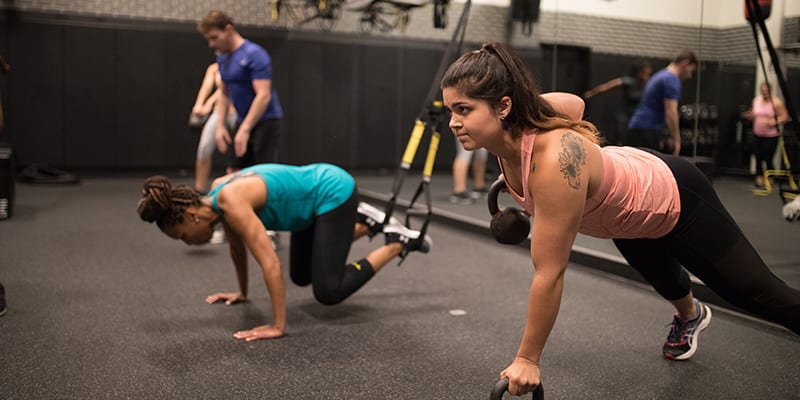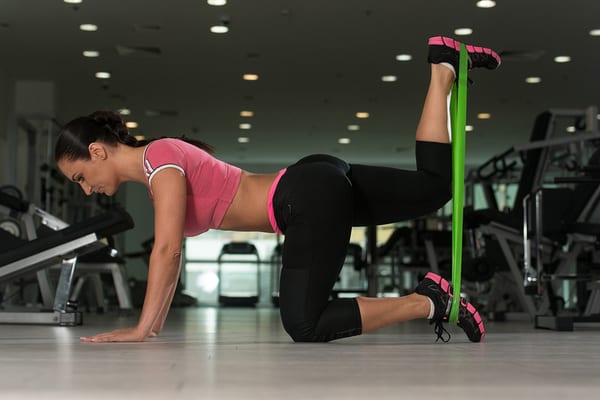Reduce the Risk of HIIT Stress & Strain with Personal Training in Baltimore
The expression “no pain, no gain” may be an oft-quoted one, but it’s also a misleading and potentially dangerous one, particularly when it comes to working out. Here’s what experts say about why a HIIT workout shouldn’t hurt, along with workout tips aimed at helping you maximize results while minimizing your risk of injury.
How to Safely Perform a HIIT Workout
No Pain, No Problem
High Intensity Interval Training, AKA HIIT, is one of the best ways to efficiently get in shape. In fact, according to researchers at McMaster University in Ontario, Canada as published in the Journal of Physiology, even 20 minutes of a HIIT training can facilitate significant results.
Unfortunately, many people mistakenly believe that they need to spend hours killing themselves at the gym in order to get results, but this couldn’t be further from the truth. As Dr. Brian Parr, Associate Professor in the Department of Exercise and Sports Science at the University of South Carolina Aiken, told Lifehacker, “The idea that exercise should hurt is simply wrong—muscle pain during or following exercise usually suggests an injury. However, some muscle soreness is unavoidable, especially if you are new to exercise.”
If you are experiencing pain during your workout, doctors, researchers, and physical therapists agree on one point: while workouts should be a challenge, they shouldn’t hurt. Not only will you be less likely to work out if it makes you feel bad before, during, or after, but you may also end up with an injury which interferes with attaining your fitness goals.
What’s the takeaway? Pushing yourself is one thing, but pushing yourself to the point of discomfort and pain is another. A bit of soreness may be normal, but pain is not.
Three Tips to Take the Hurt Out of HIIT
Wondering how to injury-proof your workout? These three tips can help.
1. Start slow and pace yourself.
The rush for results can ultimately be detrimental to your fitness goals, particularly if you end up injuring yourself in the process. The adage, “slow and steady wins the race,” absolutely applies when it comes to starting a HIIT workout program.
As you progress, your workout will become increasingly efficient, but pacing yourself from the onset is essential to staying on track for the long run.
If you have a medical or orthopedic condition, make sure to get cleared by your doctor before starting a new fitness regimen.
2. Warm up.
Says Your Fitness, “Warming up your muscles is one of the most important parts of any kind of workout, but failing to limber up for an intense HIIT session especially is a recipe for disaster. By stretching before going into the hard work, you’re increasing your muscle elasticity, which means they perform better and are less likely to get injured.”
What’s the best way to prepare your body for a HIIT workout? Continues Your Fitness, “The best way to warm up for a HIIT session is to mimic the movements you’ll be carrying out in the main workout. So, if you’re planning on sprinting, warm up with a light jog for five to 15 minutes, or go through the moves for a few light reps beforehand to make sure you have the correct form for when you hit it hard in the real thing.”
3. Use proper form.
Improper techniques across everything from squats to weightlifting lead to the majority of HIIT injuries. While HIIT is one of the hottest fitness trends of the moment, it only works if you’re doing it right. Michael Frederickson, director of physical medicine and rehabilitation at Stanford Hospital, told Your Fitness, “The whole idea is you want to have the correct movement patterns in place first before you do intensive exercise.”
Here’s one last thing to keep in mind. You can reduce your risk of injury by working with a certified personal trainer who ensures the workout is safe. Not only can a personal trainer help you learn the proper movements, but he or she can also identify and intervene if you’re moving in an unsafe or ineffective way. Sign up for a personal trainer session at Brick Bodies today.






